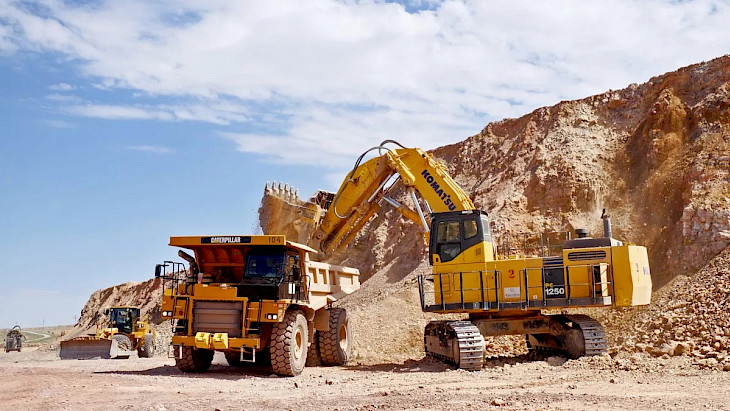Kazakhstan’s Committee of Geology under the Ministry of Industry and Construction has summarized the outcomes of the State Program for Geological and Geophysical Subsoil Exploration for the period 2019–2024. According to Forbez.kz, exploration activities covered 2.014 million square kilometers - or 91.6% of the total planned area.
Work was completed at 112 sites across four major areas: advanced geological surveying, metallogenic mapping, deep geological mapping, and hydrogeological studies. The surveys led to the identification of 38 promising sites with forecast reserves including:
-
Rare earth metals – 2.6 million tonnes
-
Copper and nickel – 3.7 million tonnes
-
Lignite (brown coal) – 1.1 billion tonnes
-
Gold – 19 tonnes
In the oil and gas sector, recoverable hydrocarbon resources amounting to 266 million tonnes were confirmed in the Aral sedimentary basin.
“Over the course of the program, 306 geological exploration licenses were issued, and private investment in the sector exceeded 137 billion tenge,” the Committee reported.
The implementation of the state program will continue in 2025–2026, targeting the remaining 200,000 square kilometers. The focus will shift to the southern and western regions, particularly the Syr Darya basin and areas with rare metal potential.
Kazakhstan is home to five identified and prospective oil and gas bearing provinces:
-
Pre-Caspian,
-
West Siberian,
-
North Caucasus–Mangyshlak,
-
Turan, and
-
Tian Shan – Pamir.
More than 200 oil, gas, condensate, and mixed hydrocarbon fields have been discovered across these provinces, including major deposits such as Kashagan, Tengiz, and Karachaganak. The Aral sedimentary basin, part of the Turan oil and gas province, also holds significant promise.
According to the K. Satpayev Institute of Geological Sciences, the Aral sedimentary basin stretches over 440 km from the Mugodzhar Mountains in the north to Sultan-Uizdag in the south. It spans 210 km in width from the Aralo-Kyzylkum uplift in the west to the Akkyr-Kumkala uplift in the east, covering approximately 80,000 square kilometers. The majority of the basin lies beneath the waters of the Aral Sea and is under the jurisdiction of Kazakhstan and Uzbekistan.
Geological and geophysical exploration — both regional and prospecting — has been conducted in this area since the 1960s, including offshore work in the Aral Sea that began in the 1970s.
CentralasianLIGHT.org
May 14, 2025

